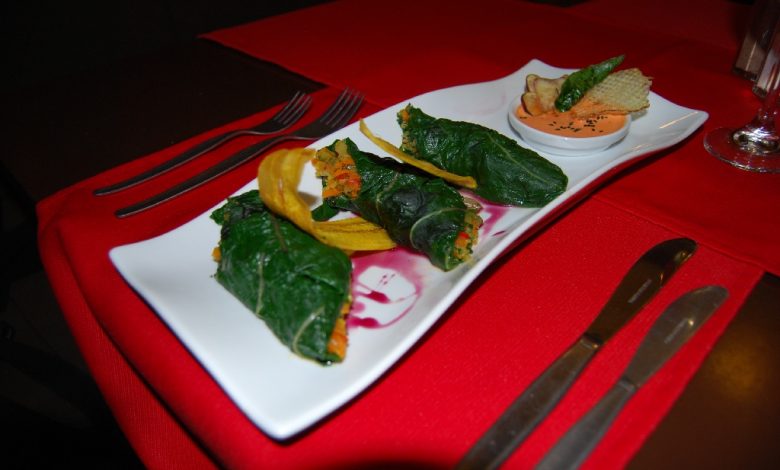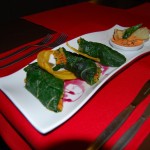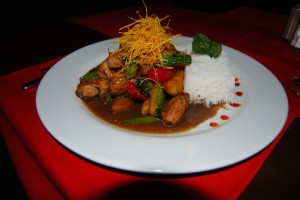Fusiones Restaurant: Location, Concept, and Good Food


Location, they say, is the secret of success for restaurants. But, sometimes it is grabbing a new concept by the ears and riding it into the dust. Other times the secret is good service and good food. Fusiones Restaurant has the three: good location, trendy concept, and good food.
It sits on the second floor of a building where the main Avenida Sol (Sun Avenue) joins the Plaza de Armas (the Central Square), on the second floor of an old but remodeled building. This counts as one of the best locations in the city.
Almost all traffic in the center of town goes by here. During Festivals troupes dance up the Sun Avenue, turn the corner, and dance around the Main Square where a reviewing stand of judges sits in front of the massive Cathedral.
Fusiones sits above the crowd, where you hardly know there is traffic, but where you can see it if you want. Its balconies do not open onto the main square, like other restaurants, but it has a pleasing space done in off white walls, dark wood accents, and red and scarlet tablecloths with black accents. Its well trained and gracious staff dances through it, seemingly blessed with almost supernatural calm.
At night, like so many restaurants on the square, it becomes a concert hall when local musicians who know their art enter, move to the front, and begin a show that almost always captivates the guests at their tables.

But the food is easily the main show, despite the charangos, drums, flutes, and pan pipes.
Fusiones food claims as its own a concept that dominates much discussion of Peruvian food, fusion. This is the title of celebrity chef Gaston Acurio’s justifiably famous book on Peruvian cuisine–though he is not involved to my knowledge in this restaurant — and the name of a culinary style.
Acurio speaks of the need to brand Peruvian food to make it well known and consumable all over the world, just as Mexico has done with tacos and the Japanese have done with sushi. While these are two of the more common of culinary offerings around the world, if generally unrelated to the nations from which the words may have originated, nevertheless Acurio wants Peruvian food to be known and to do so there must be an easily identifiable slogan. As a result he called his book 500 years of Fusion (500 Años de Fusión.)

To fuse, to melt together such that two different elements blend together to make something new, is the idea both as descriptive and prescriptive label.
As description, fusion attempts to describe what has happened in this country where the indigenous Inca Empire was violently taken over by the Spanish, whose descendants still dominate the country on the whole. But, as Solange Alberro, a historian at the very prominent Colegio de México, argues for that country though considering themselves fervently Spanish people began adopting customs of the land, including especially foods. Even those who thought themselves the purest of Spanish blue bloods, just through the process of daily life, adopted indigenous Mexican (I mean Peruvian) ways.
This is what Acurio hopes to capture with the trendy term fusion. He also wants the term to describe how Indians also Hispanized and Japanese, Germans, Chinese and Italians all mixed their traditions with the local. That blend is what he sees as the brilliance of Peruvian cooking.
Not only is the cuisine a blend of many different cultures, each making a contribution as if — to shift metaphors (which is often done when the term fusion is used to describe Peruvian food) — cooking were a matter of drawing from a palette of distinctive colors like different ethnicities.
But there are other shades on this wheel. It includes the distinctive offerings of a very geographically diverse country. Because it is in the tropics and has very high mountains, over a very narrow distance one finds an almost unbelievable climatic diversity from coastal desert to changing valleys, high tundra, and then lowland jungle. Its possibilities seem to encompass all the climates of the world.
But then, Acurio means the cuisine should creatively explore that dual variety–ethnic and geographic — to improve and invent while engaging in another fusion. It should take the Peruvian and process it through the finest of culinary skills such as developed in elite schools in France. He wants Peruvian to meet the best of Europe as an equal, because it has taken from them and fused their way with Peru’s raw materials to create something greater than its parts.
This is the concept that Fusiones Restaurant has lassoed and rides. And, they do it well.

Fusiones’ menu classifies food into Novo-Andean and Fusion styles. In this they pick up another part of Peruvian culinary history. Novo-Andean is the style where high cuisine, typified by the best of European-style training, meets classical Andean food and attempts to re-imagine the genre.
However, many chefs, including Mr. Acurio, starting feeling constrained by the Novo-Andean category and so Fusion was born. It promised an opening into the world’s culinary traditions, especially those of Asia, by bringing them into encounter with Peru — like new Columbuses sailing to discover new possibilities in the Orient.
Thus the menu offers Novo-Andean dishes with poetic names — such as “Tournedos of Alpaca in Merlot Sauce with Pallar Tacu-Tacu, a combination of the formerly under-appreciated meat of the native camelid more known for producing extremely fine wool with the native and celebrated lima bean, or pallar. And, on the next page an also poetically adventuresome “Thai Style Sautéed Chicken and Mango.”
This latter is a reinvention of a classic Peruvian dish that already stems from an earlier fusion of Chinese cuisine with Peruvian — Pollo Saltado (or chicken stir fry.) Here it is re-imagined following another meaning of the Peruvian verb “saltear,” that is to sauté, with fine sections of tender chicken breast joined with slices of ripe mangos in a sauce inspired by mild Thai curries, although not the standard curries of American Thai cuisine.
The night I went to Fusiones I began with a creative appetizer called “Spring rolls with Andean hot pepper sauce.” I had in mind either a version of the fresh spring rolls–rice noodles rolled with various fresh herbs — or the classic fried spring rolls that have been made so common int he united States. But these were a roll of, I believe, braised and cooled chard leaf rolled around an assortment of julienned vegetables with a dipping sauce made from Andean hot peppers that wonderfully brought out the richness and sweetness of the vegetables.
After this dish, and a few sips of a well chosen glass of house sauvignon blanc, my chicken and mango arrived. It was a mountain of perfectly cut and perfectly cooked chunks of tender and juicy chicken with al dente red peppers and zucchini along with the alluringly sweet chunks of ripe mango in a piquant broth, accompanied by a round of molded white rice that itself was flavorful. The dish sat well on my palate and on my stomach. It was masterful.
Fusions opened in May of 2008 and has years of experience now to make its operation seamless and recommendable for its location, concept, quality of service, but more than anything else, its food.




